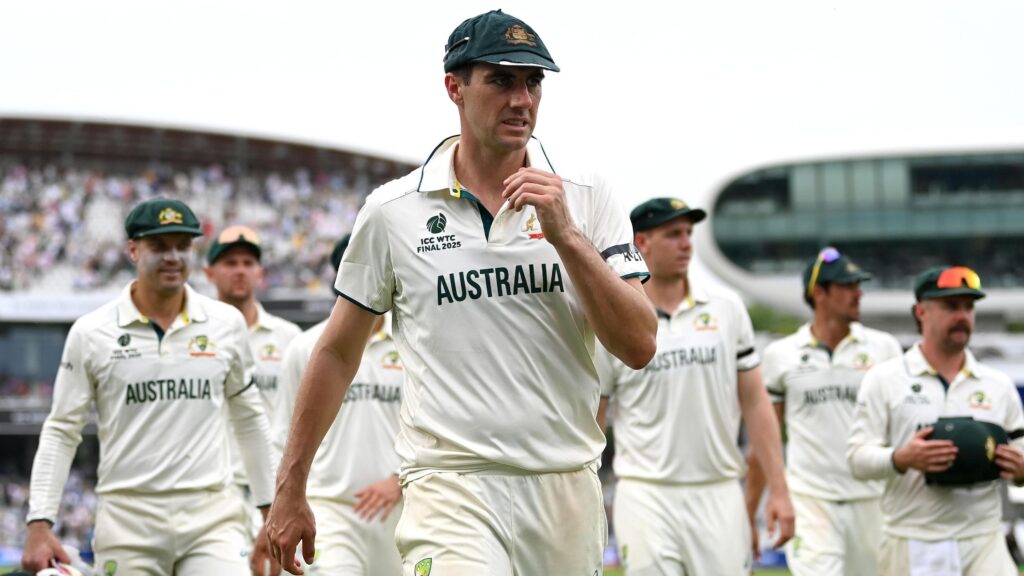The forthcoming Ashes series promises to be an intensely scrutinized event for the Australian cricket team. In the lead-up to the three Test matches against the West Indies, scheduled to commence on June 25 in Barbados, several pressing issues remain unresolved following Australia’s recent defeat to South Africa in the World Test Championship final at Lord’s. Captain Pat Cummins expressed that this five-wicket loss catalyzes the need for important decisions in the coming weeks. The focus lies deeply on player performances, strategies, and the overall squad balance as Australia seeks to reclaim their historic Ashes rivalry against England later this year.
First and foremost, veteran opener Usman Khawaja faces escalating pressure due to underwhelming performances, which could raise concerns about his spots on the roster. While the experienced left-hander experienced a resurgence in his career during the previous Ashes series, recent displays against South Africa — notably a dismal 20-ball duck and an equally lackluster 23-ball stint — have reignited discussion about his future with the team. Cummins’ remarks highlight that Khawaja’s previous experience with fluctuating form gives room for optimism, but after a poor showing against the West Indies, the pressures of time are mounting on the seasoned player. Khawaja’s ability to recover and perform effectively will significantly influence Australia’s opening batting strategy ahead of the critical Ashes encounter.
Another issue looming over the Australian setup is the ongoing uncertainty in the opening batting positions. Speculation surrounding potential partnerships has become a national discourse, with players such as Travis Head, Nathan McSweeney, and Steve Smith being trialed. While Marnus Labuschagne briefly filled the void during the recent match at Lord’s, his lack of impactful scores has left coaches contemplating whether to revert to more conventional batting orders. Coach Andrew McDonald emphasized the necessity of settling this configuration before the Ashes, recognizing the disruptive “musical chairs” affecting Australia’s batting stability.
Additionally, Nathan Lyon, one of Australia’s premier bowlers with 553 Test wickets, is experiencing challenges in adapting his spin artistry to today’s faster-paced formats. His performance during the World Test Championship final was less than stellar, prompting debates about his effectiveness in quick-paced Test matches. The evolving styles of opposition teams, including England’s aggressive approach dubbed ‘Bazball’, could require shifts in strategy for Australia, potentially favoring leg-spinners over Lyon’s traditional spin, which could lead to a re-evaluation of options within the bowling lineup.
Furthermore, concerns regarding the age of Australia’s elite pace attack are becoming increasingly evident. Cummins, Josh Hazlewood, and Mitchell Starc — collectively boasting nearly 1,000 Test wickets — are aging at 32, 34, and 35, respectively. With minimal depth in the current bowling roster and potential performance declines, Australia risks significant consequences should injuries or dips in form occur among its key players. The discussion must also include seasoned backups like Scott Boland, who unfortunately also falls into a similar age category. According to McDonald, the balance between maintaining experienced players and preparing new ones becomes vital as the Ashes series approaches.
In conclusion, Australia’s forthcoming assignment against the West Indies will serve as a crucial platform for evaluating player performances, tactical capabilities, and team dynamics as they gear up for the highly-awaited Ashes series against England. The internal competition for places will undoubtedly intensify, with player morale, historical context, and recent performances playing pivotal roles in shaping Australia’s prospects. The ability to adapt, renew faith in experienced players, and potentially inject fresh talent could be the factors that determine whether Australia can reclaim their dominance on an international stage.



